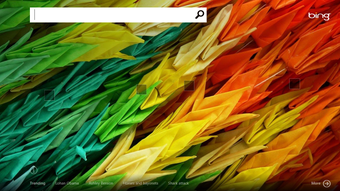Windows 8: Good for tablets, with touchscreen operation and new apps
When Microsoft launched Windows 8 in 2012, the reaction was decidedly mixed. In an audacious attempt to bridge the gap between traditional PCs and the emerging wave of touch-based devices, Windows 8 made a daring move that didn't always resonate with users. Years later, it's time for a fresh and unbiased reassessment of Microsoft's contentious operating system.
Trading familiarity for touch
The most obvious change in Windows 8 was the Start Screen. Gone was the classic Start Menu, replaced by a full-screen display of colorful tiles. These tiles represented apps, both traditional desktop programs and sleek new touch-optimized "Modern" apps. This change was jarring for many. While the Start Screen was customizable and reasonably functional for touchscreen interfaces, users accustomed to a mouse and keyboard found it an extra layer between them and their familiar applications.
Windows 8 was undeniably designed with touch interfaces at the forefront. Swiping, pinching, and other gestures were incorporated alongside traditional inputs, but the balance was heavily skewed towards the touch experience. This left desktop users feeling like they were grappling with a system that wasn't tailored for them.
Advertisement
Two user experiences, one OS
Windows 8's duality was both its greatest strength and its most frustrating feature. The touch-friendly environment felt fresh, yet the classic desktop and its established programs still lurked beneath. Jumping between the two modes was disjointed, particularly for those without a touchscreen.
However, the ambition behind Windows 8 can't be overlooked. Microsoft aimed to unify disparate computing experiences, and for users with touch-enabled devices, it offered a glimpse of that potential. Despite being limited early on, the Modern apps showcased a cleaner, more focused approach to software.
A legacy of lessons
Windows 8 was a bold experiment that ultimately didn't win over most PC users. The backlash led to Windows 8.1, a free update that made concessions to tradition, such as allowing users to boot directly to the desktop. The lessons learned from Windows 8 are evident in Windows 10, which offers a far more integrated and seamless blend of the traditional and modern.
Ultimately, Windows 8 is a compelling case study of ambition versus acceptance. It was a brave attempt to merge two distinct computing experiences. Its legacy isn't in overwhelming success, but in the invaluable lessons, it imparted, paving the way for a more harmonious future for Windows.


